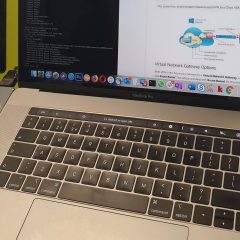macOS: FaceTime HD Camera Not Working In Microsoft Teams?
KB ID 0001671 Problem My firm are in the middle of moving from Skype to Teams, so more and more online meetings are being done with Teams. I have had some problems trying to get my camera to work? Solution Firstly you need to ‘Allow’ Teams to use the camera; Click the ‘Apple’ icon > System preferences > Security and privacy > Privacy > Camera > Tick to enable ‘Microsoft Teams’ (Note:...
Remote Connect to macOS
KB ID 0001539 Problem Remotely connecting to Windows is easy we’ve had RDP since Windows NT4, (yes I’m that old). But what if you want to remote connect to a mac? Well that has ‘Screen Sharing’ built in, (which it pretty much the same, but it uses VNC). If you’re unfamiliar with VNC, (Virtual Network Computing,) you can install it on both Windows and Linux. Normally you need a client, (to connect with)...
AnyConnect – “Connection attempt has failed due to server communication errors’
KB ID 0001279 Problem We had a firewall fail at work this week, as part of the rebuild the latest OS was put on it, version 9.7(1). I thought no more about it until I tried to VPN in and got this; I used my Windows 10 VM and that connected fine, only my MacBook could not connect, this VPN tunnel is a big deal I need it to get onto client’s networks. I tried my other VPN connections and every one was fine, only the recently...
MAC TFTP Software (OS X )
Mac TFTP KB ID 0001247 Problem Every time I go to a networking event theres a sea of MacBooks in the audience, If techs like MacBooks so much why is there such a lack of decent Mac TFTP software? Solution The thing is, I’m looking at the problem with my ‘Windows User’ head on. When I have a task to perform I’m geared towards looking for a program do do that for me. OS X is Linux (There I said it!) Linux in a...


